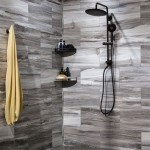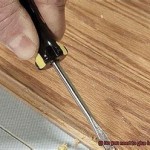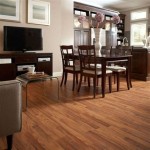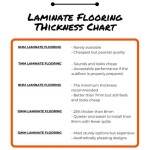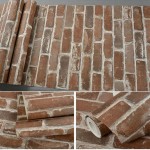Vinyl Plank Flooring Kitchen Ideas: Blending Style and Practicality
The kitchen, often considered the heart of the home, demands flooring that can withstand heavy foot traffic, spills, and temperature fluctuations. Vinyl plank flooring has emerged as a popular choice for kitchen spaces due to its durability, water resistance, and aesthetic versatility. This article explores various vinyl plank flooring ideas for kitchens, providing insights into design considerations, material selection, and installation approaches.
Vinyl plank flooring, also known as luxury vinyl plank (LVP), is a multi-layered synthetic flooring product designed to mimic the look and feel of natural materials like hardwood, stone, or ceramic tile. It typically consists of a wear layer, a printed design layer, a core layer, and a backing layer. The wear layer, usually made of transparent vinyl, provides protection against scratches, stains, and fading. The printed design layer offers a wide range of aesthetic options, replicating the textures and patterns of various natural materials. The core layer provides dimensional stability and water resistance, while the backing layer enhances comfort and sound insulation.
Understanding the Benefits of Vinyl Plank Flooring in Kitchens
The increasing popularity of vinyl plank flooring in kitchens can be attributed to several key advantages. One of the most significant benefits is its exceptional water resistance. Unlike hardwood or laminate flooring, vinyl plank is impervious to water damage, making it an ideal choice for kitchens where spills are common. This characteristic also prevents the growth of mold and mildew, contributing to a healthier indoor environment.
Durability is another compelling reason to opt for vinyl plank flooring. The robust construction of LVP, coupled with a protective wear layer, allows it to withstand heavy foot traffic, dropped objects, and the impact of kitchen appliances. High-quality vinyl plank flooring can maintain its appearance for many years, even in busy kitchens, making it a cost-effective flooring solution.
From a design perspective, vinyl plank flooring offers unparalleled versatility. It is available in a vast array of colors, patterns, and textures, allowing homeowners to create a customized look that complements their kitchen décor. Whether one prefers the rustic charm of wood-look planks, the sophisticated elegance of stone-look tiles, or the clean lines of modern designs, vinyl plank flooring can accommodate diverse aesthetic preferences.
Furthermore, vinyl plank flooring is relatively easy to install, especially in click-lock or floating configurations. DIY enthusiasts can often install LVP flooring themselves, saving on professional installation costs. The installation process is generally straightforward, requiring basic tools and minimal subfloor preparation. However, for complex layouts or if one lacks experience, professional installation is recommended to ensure a flawless result.
Exploring Different Vinyl Plank Flooring Styles for Kitchens
The design possibilities for vinyl plank flooring in kitchens are virtually limitless. The selection of the appropriate style depends on the overall kitchen aesthetic, the desired level of formality, and personal preferences. Some of the most popular vinyl plank flooring styles for kitchens include wood-look planks, stone-look tiles, and patterned designs.
Wood-look vinyl plank flooring is a perennial favorite, offering the warmth and beauty of hardwood without the associated maintenance challenges. It is available in a wide range of wood species, colors, and textures, from light and airy oak to rich and dark walnut. Wood-look planks can create a rustic, farmhouse-style kitchen or a sleek and modern space, depending on the specific design choices.
Stone-look vinyl plank flooring provides a sophisticated and elegant alternative to natural stone tiles. It replicates the appearance of materials like slate, travertine, and marble, offering a luxurious look at a fraction of the cost. Stone-look tiles can create a contemporary or traditional kitchen, adding a touch of refinement and visual interest.
Patterned vinyl plank flooring allows for a more creative and customized design. These planks can feature geometric patterns, abstract designs, or even intricate motifs. Patterned floors can add a playful and unique touch to a kitchen, making it a focal point of the home. However, it is important to choose a pattern that complements the overall kitchen design and does not overwhelm the space.
Beyond these broad categories, there are numerous variations and sub-styles to consider. For example, distressed wood-look planks can add a rustic and vintage feel, while wide-plank designs can create a more spacious and open look. Herringbone or chevron patterns can add a touch of elegance and sophistication, while concrete-look vinyl planks can create a modern and industrial vibe.
The choice of color is also crucial in determining the overall look and feel of the kitchen. Light-colored planks can brighten up a small kitchen and make it feel more spacious, while dark-colored planks can add warmth and drama to a larger kitchen. Neutral colors like gray, beige, and brown are versatile options that can complement a wide range of kitchen décor styles.
Key Considerations for Selecting Vinyl Plank Flooring for a Kitchen
While the aesthetic appeal of vinyl plank flooring is important, several practical considerations should be taken into account when selecting the right flooring for a kitchen. These factors include wear layer thickness, core type, installation method, and maintenance requirements.
Wear layer thickness is arguably the most important factor in determining the durability of vinyl plank flooring. The wear layer is the protective coating that resists scratches, stains, and scuffs. A thicker wear layer provides greater protection and extends the lifespan of the flooring. For kitchens, it is generally recommended to choose vinyl plank flooring with a wear layer of at least 20 mil (0.02 inches). In high-traffic kitchens or those with pets, a wear layer of 30 mil or higher may be preferable.
The core type also plays a significant role in the performance of vinyl plank flooring. There are two main types of cores: waterproof and water-resistant. Waterproof cores, typically made of wood-plastic composite (WPC) or stone-plastic composite (SPC), are completely impervious to water damage. Water-resistant cores, often made of traditional vinyl, offer some protection against moisture but may not be suitable for areas with prolonged exposure to water. For kitchens, waterproof cores are generally recommended to ensure long-lasting durability and prevent water damage.
The installation method can also impact the overall cost and performance of vinyl plank flooring. There are three primary installation methods: glue-down, click-lock or floating, and loose-lay. Glue-down installation involves adhering the planks directly to the subfloor using a special adhesive. This method provides a secure and stable installation but can be more labor-intensive and costly. Click-lock or floating installation involves interlocking the planks together without adhesives. This method is generally easier and faster than glue-down installation, making it a popular choice for DIY projects. Loose-lay installation involves placing the planks on the subfloor without adhesives or interlocks. This method is the easiest and fastest to install but may not be suitable for high-traffic areas or kitchens with uneven subfloors. For most kitchens, click-lock or glue-down installation methods are recommended to ensure a secure and durable floor.
Maintenance requirements are another important consideration. Vinyl plank flooring is generally easy to clean and maintain, requiring only regular sweeping or vacuuming and occasional damp mopping. However, it is important to follow the manufacturer's recommendations for cleaning products and maintenance procedures to avoid damaging the wear layer. Avoid using abrasive cleaners or harsh chemicals, as these can scratch or dull the surface of the flooring.
In addition, consider the underlayment required for the chosen vinyl plank flooring. Some LVP products come with attached underlayment, while others require separate underlayment. Underlayment provides cushioning, sound insulation, and moisture protection. It is important to choose an underlayment that is compatible with the vinyl plank flooring and the subfloor.
Finally, consider the overall budget for the flooring project. Vinyl plank flooring is available in a wide range of prices, depending on the quality, features, and brand. It is important to set a realistic budget and choose flooring that meets the needs and aesthetic preferences without exceeding financial constraints.
By carefully considering these factors, homeowners can select vinyl plank flooring that not only enhances the beauty of their kitchen but also provides long-lasting durability and performance.

Updating A Kitchen With Vinyl Engineered Plank Flooring Cutertudor House

Modern Kitchen Luxury Vinyl Plank Flooring And Glass Subway Tiled Backsplash

Kitchen Floor Ideas For Your Home Carpet One

Dark Luxury Vinyl Plank Kitchen Farmhouse Decor House Interior Design

2024 Kitchen Flooring Trends 20 Ideas To Update Your Style Inc

Vinyl Wood Look Flooring Ideas

13 Ideas For Upgrading Your Kitchen Floors Extra Space Storage

29 Vinyl Flooring Ideas With Pros And Cons Digsdigs

Vinyl Kitchen Flooring Ideas Checkatrade

75 Vinyl Floor Kitchen Ideas You Ll Love February 2024 Houzz
Related Posts



